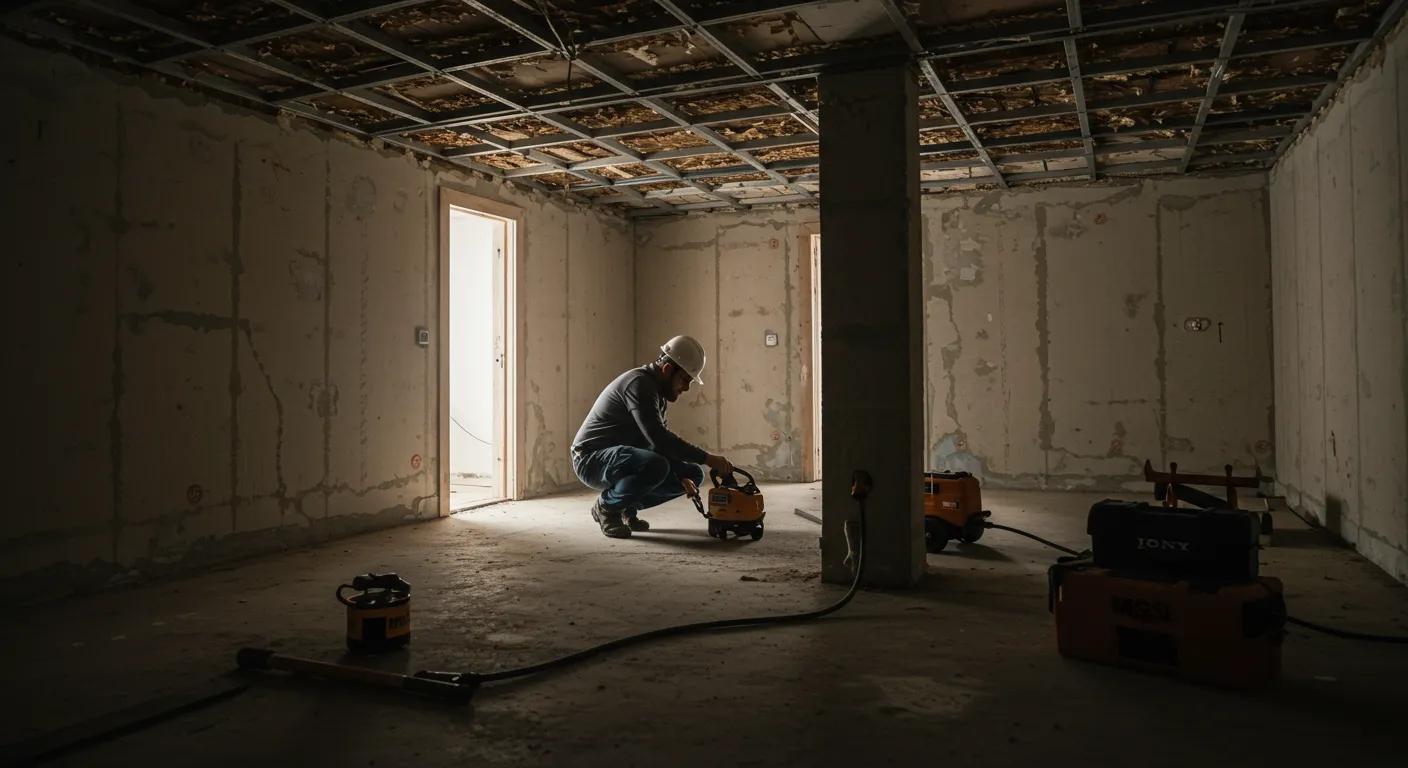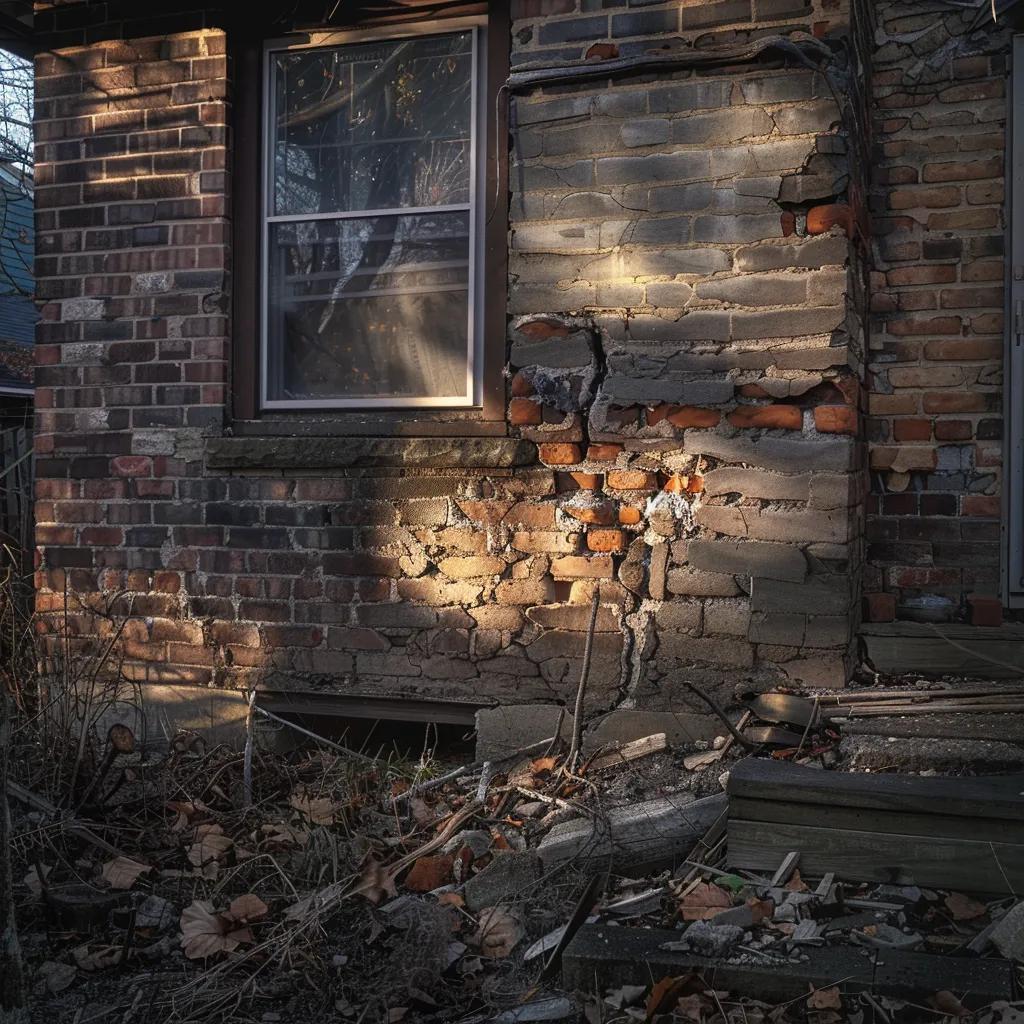San Antonio Homes: FoundationRepair vs. Property Value Risks
An unstable foundation can affect both a home’s structural integrity and its market value. In San Antonio, hidden damage beneath a concrete slab or pier and beam system can lead to high repair expenses, declining property values, and safety hazards. This article explains the crucial role of foundationrepair in protecting home investment by discussing common foundation issues, local soil challenges, repair costs, maintenance measures, and the repair process itself.
By understanding foundation problems—whether caused by expansive clay compression, moisture penetration, or soil erosion—homeowners can make informed decisions about professional foundation repair services. Using methods from concrete crack repair to steel pier installation, certified professionals help eliminate immediate hazards and preserve long-term home value.
Transitioning to the main content, the article covers the need for foundationrepair, cost analysis, preventative maintenance, repair benefits, the repair process, and when to seek professional help.
Understand the Role of FoundationRepair in San Antonio Homes
Foundationrepair protects a home’s stability and value by fixing deficiencies caused by soil movement, water damage, or aging structures. In San Antonio, expansive clay often creates uneven pressure, leading to cracks and misalignments.
Identify Common Signs of Foundation Issues in Residential Properties
Visible signs of foundation problems include: – Cracks in walls and floors – Misaligned door frames or gaps between floors and walls – Subtle tilting or sinking of the structure – Excessive water seepage in basements and creaking sounds under pressure
These indicators, if left unattended, can lead to higher repair costs and safety issues. Routine inspections by foundationrepair experts are recommended.
Learn How FoundationRepair Can Increase Home Value
Certified repair services improve a home’s market value by: – Restoring structural integrity and energy efficiency – Providing documented repair history and warranties – Enhancing curb appeal and interior stability These elements can lead to higher appraisal values, more competitive mortgage rates, and better resale prices.
Examine Local Soil Conditions Affecting Foundation Stability
San Antonio’s clay-rich soil exhibits high plasticity and shrink-swell behavior. This can cause shifting foundations and cracks. Regular soil testing and consulting with structural engineers help determine the correct repair method for these unique conditions.
Explore Types of FoundationRepair Methods Available
Common repair methods include: – Underpinning with steel piers for deep support on clay soils – Slabjacking to lift concrete slabs – Crack stitching and epoxy injections for minor fissures
Each approach has its benefits depending on damage severity and foundation type, and long-term durability should be carefully evaluated.
Discuss the Importance of Hiring Certified Professionals
Hiring certified professionals ensures: – Repairs meet industry standards and local building codes – Accurate evaluations, cost estimates, and warranty-backed work – Reduced risk of recurring issues due to expertise with local soil conditions
Review Local Building Codes and Regulations for Repairs
Compliance with local San Antonio building codes protects homeowners by ensuring all repairs meet safety and performance standards. Familiarity with these codes also streamlines permit processes and minimizes liability concerns.
Assess the Costs Associated With FoundationRepair

Foundationrepair costs vary with damage severity, repair method, and local market conditions. Homeowners must balance upfront expenses with the long-term increase in resale value.
Breakdown the Expenses Involved in Different Repair Methods
- Steel PierInstallation: Moderate to high cost due to materials and labor.
- Slabjacking: Typically less expensive, used for lifting sunken concrete.
- Epoxy Injection: Economical for repairing minor cracks. Expenses include materials, labor, permits, and additional services like soil stabilization.
Calculate Long-Term Savings From Early Foundation Repairs
Early repairs can prevent more expensive future work. By mitigating collapse risks, homeowners avoid repeated repair expenses and potential property value declines—sometimes saving up to 35% compared to addressing compounded issues later.
Compare Costs With Potential Home Value Appreciation
While foundationrepair incurs upfront costs, the resulting improvement in structural soundness and aesthetics can raise home value by 10–15%. This increase can positively influence mortgage valuations and attract buyers.
Investigate Financing Options for Foundation Repairs
Homeowners may use various financing options such as: – Home equity loans – Construction financing and government grants – In-house financing plans from repair companies These solutions can spread costs over time and reduce immediate financial pressure.
Discuss the Role of Inspection Fees in Overall Costs
Inspection fees paid to certified structural engineers help identify all foundation issues and verify the quality of repairs. Although an added expense, they minimize unexpected problems and support warranty claims, ultimately extending repair longevity.
Evaluate the Impact of Repairs on Homeowner Insurance Premiums
Well-documented foundation repairs can lower insurance premiums because stable structures pose less risk. Homeowners should check with insurers for possible discounts after repairs are completed.
Investigate Preventative Measures for Foundation Maintenance
Preventative maintenance extends repair life and prevents future damage. In San Antonio—where harsh soil and weather conditions prevail—regular upkeep is essential.
Implement Regular Inspections to Catch Issues Early
Professional inspections every two to three years can detect minor cracks, settling, or moisture intrusion early. Early detection leads to smaller, less expensive repairs.
Maintain Proper Drainage Around the Home’s Foundation
Effective drainage is crucial. Gutters, downspouts, and proper landscape grading direct water away from foundations. Installing French drains or sump pumps reduces moisture buildup and minimizes risk of cracks.
Use Landscaping Strategies to Support Foundation Integrity
Thoughtful landscaping helps stabilize soil. Choosing appropriate vegetation, using mulching, and designing raised garden beds can control moisture levels and reduce erosion, thereby protecting the foundation.
Address Plumbing Leaks That Might Affect Foundation Stability
Undetected plumbing leaks can undermine foundation stability by saturating nearby soil. Regular plumbing inspections and timely repairs prevent water intrusion that accelerates structural decay.
Educate Homeowners on Seasonal Maintenance Practices
Homeowners should learn specific seasonal tasks: – Apply sealants before heavy rains to prevent seepage. – Insulate pipes in cold months to avoid freeze damage. Workshops and detailed guides can help homeowners manage seasonal risks.
Create a Long-Term Maintenance Plan for Foundation Health
A long-term plan should include: – Regular inspections – Scheduled checks on drainage systems and landscaping – Prompt plumbing repairs Such proactive maintenance not only delays major repairs but also preserves home value.
Explore the Benefits of Timely Foundation Repairs

Timely repairs offer benefits beyond structural improvement. Early intervention can enhance overall home performance and prevent extensive future damage.
Understand How Repairs Protect Overall Structural Integrity
Repair methods like steel pier installation and slabjacking restore and stabilize a foundation, reducing the risk of collapse. This not only safeguards the physical structure but also provides homeowners with improved safety and peace of mind.
Examine the Impact on Energy Efficiency After Repairs
Sealing foundation cracks improves insulation, which can reduce energy bills by up to 15%. A stable foundation prevents drafts and moisture entry, leading to a more comfortable indoor environment.
Analyze the Benefits of Improved Indoor Air Quality
Repairing foundation defects minimizes moisture intrusion, reducing mold and mildew growth. Improved indoor air quality promotes better health and increases a home’s market appeal.
Assess Effects on Home Safety and Comfort Levels
Stable foundations eliminate hazards such as uneven floors and cracked walls, contributing to safer, more comfortable living conditions. Enhanced safety and comfort can increase both home satisfaction and resale value.
Look Into How Repairs Can Prevent Costly Future Damages
By addressing foundation issues early, homeowners avoid cascading problems that could affect plumbing, roofing, and electrical systems. Proactive repair is generally much less expensive than emergency interventions or full rebuilds.
Gauge Homeowner Satisfaction After Completed Repairs
Many homeowners report high satisfaction after timely repairs due to improved energy efficiency, structural stability, and resale appeal. Positive experiences and warranty-backed service further enhance long-term confidence in the home.
Learn About the FoundationRepair Process
Understanding the foundationrepair process is key to successful project outcomes. The process is methodical—from inspection to post-repair evaluation—with each step ensuring adherence to building standards.
Step-by-Step Overview of a Typical FoundationInspection
A certified inspector starts with a visual examination and then measures cracks, settling, or moisture issues using laser levels and sensors. The resulting report forms the basis for repair strategy and insurance documentation.
Outline Preparation Needed Before Foundation Repairs
Before repairs begin, homeowners should: – Gather previous inspection reports, architectural drawings, and permits – Communicate concerns with repair experts – Prepare the surrounding landscape by cleaning debris and managing water flow This preparation reduces surprises and streamlines the repair process.
Review the Technology and Tools Used in Repairs
Modern repairs use advanced technology such as: – Epoxy injections and hydraulic jacking – Laser leveling and high-definition monitoring systems These tools ensure precise, efficient, and sustainable repairs.
Discuss Post-Repair Evaluations and Follow-Up
After repairs, a follow-up evaluation confirms that the foundation meets safety standards. Homeowners receive an evaluation report outlining maintenance recommendations and warranty details, with checkups during the first year to monitor effectiveness.
Highlight Warranties and Guarantees Offered by Contractors
Reputable repair companies offer warranties covering labor and materials. These guarantees provide confidence against future complications and are critical in markets where foundation stability affects resale value.
Share Homeowner Experiences During the Repair Process
Testimonials from homeowners often mention restored structural stability, better indoor comfort, and minimal downtime. These reviews serve as useful guidance for future clients of foundationrepair services.
Know When to Seek Professional Help for Foundation Issues

Not all foundation issues are DIY fixes. When problems persist or worsen, professional intervention is necessary.
Identify Critical Signs That Require Immediate Attention
Critical signs include: – Noticeable and increasing cracks in walls – Significant shifting or tilting of the structure – Uneven floors and visible water damage When observed, professional inspections are essential to prevent full structural failure.
Evaluate When DIY Fixes May No Longer Suffice
DIY methods may offer temporary relief but often fail to tackle issues like expansive soil movement or improper drainage. Continued symptoms indicate the need for certified foundationrepair experts.
Discuss How to Choose the Right FoundationRepair Service
Homeowners should: – Verify contractor credentials and references – Compare multiple estimates – Ensure the service explains their repair process and adherence to local codes Such due diligence increases the likelihood of a long-lasting repair solution.
Review the Importance of Getting Multiple Estimates
Obtaining several quotes helps homeowners understand typical costs and repair methods. Transparent pricing and service guarantees enable informed decision-making.
Share Testimonials From Homeowners After Hiring Professionals
Positive reviews frequently mention increased structural stability, energy efficiency, and overall comfort after repairs. These testimonials reassure potential clients about the quality and reliability of professional repairs.
Clarify When to Involve Real Estate Agents or Legal Advice
If foundation issues affect property sales, insurance claims, or lead to disputes over warranties, consulting real estate agents or legal professionals can help manage these broader implications.
Frequently Asked Questions
Q: What are the early signs of foundationdamage in San Antonio homes? A: Early signs include visible cracks in walls and floors, misaligned door and window frames, uneven flooring, and water seepage in the basement. These issues indicate potential instability that requires professional inspection.
Q: How does local soilcondition affect foundationstability? A: San Antonio’s expansive clay can swell or shrink with moisture changes, leading to uneven pressure and foundation cracking. Tailored repair solutions are essential to address these issues.
Q: Can timely foundationrepairreally increase home value? A: Yes, repairing foundation issues enhances structural integrity, curb appeal, and indoor stability, which all contribute to higher market value and improved resale prospects.
Q: What financing options are available to homeowners for foundationrepairs? A: Options include home equity loans, construction financing, government grants, and in-house financing plans offered by repair companies, all of which make repairs more financially manageable.
Q: How do professional inspections and warranties add value to foundationrepairs? A: They ensure all issues are identified and corrected properly, protecting against future failures and saving on unexpected expenses.
Q: When should a homeowner move from DIY fixes to professional repairservices? A: If DIY repairs fail to stop cracks or structural misalignment, or if issues like uneven floors and persistent water damage continue, professional repair services are essential.
Q: How do foundationrepairs impact insurance premiums? A: Stable foundations reduce risk for insurers, often resulting in lower premiums for homeowners.
Why Timely Foundation Repairs Are Essential for San Antonio Homes
Early detection and timely foundation repairs are essential for maintaining the structural integrity, energy efficiency, and market value of San Antonio homes. Regular inspections and preventative maintenance help avoid costly future repairs and ensure a safer living environment. Investing in professional repair services not only protects your home but also increases long-term savings and resale potential.
Table: FoundationRepair Cost Breakdown Comparison
This table summarizes various foundationrepairmethods along with their costs, benefits, and expected lifespans.
List: Preventative Maintenance Strategies for Foundation Health
- Regular Inspections – Early Detection: Scheduling biannual or triennial professional inspections helps catch foundation issues early.
- Effective Drainage Solutions – Moisture Control: Installing and maintaining gutters, downspouts, and French drains prevents water buildup near the foundation.
- Strategic Landscaping – SoilStabilization: Proper grading, careful vegetation selection, and mulching help manage moisture and reduce soil erosion.
- Plumbing Maintenance – Leak Prevention: Routine checks of both indoor and outdoor plumbing systems prevent leaks that could damage the foundation.
- Seasonal Preparations – Weather Adaptability: Applying sealants before rains and insulating pipes in winter mitigates environmental impacts on the foundation.
This list details key preventative strategies to maintain foundationstability and long-term durability.
Table: Comparison of Maintenance Costs and Home Value Impact
This table compares different maintenance strategies by cost, potential home value increase, and additional benefits.


